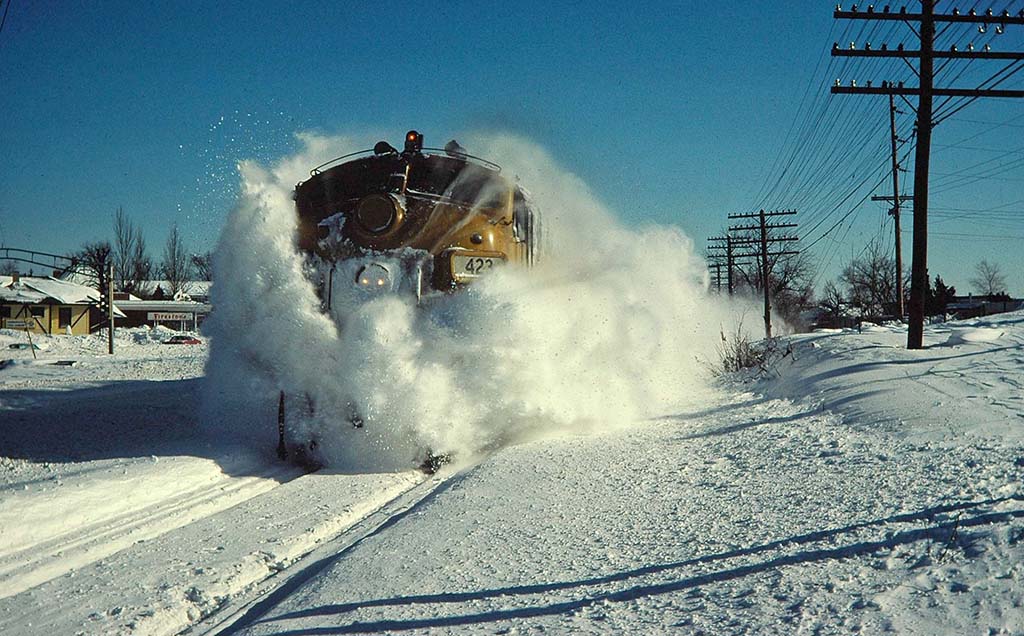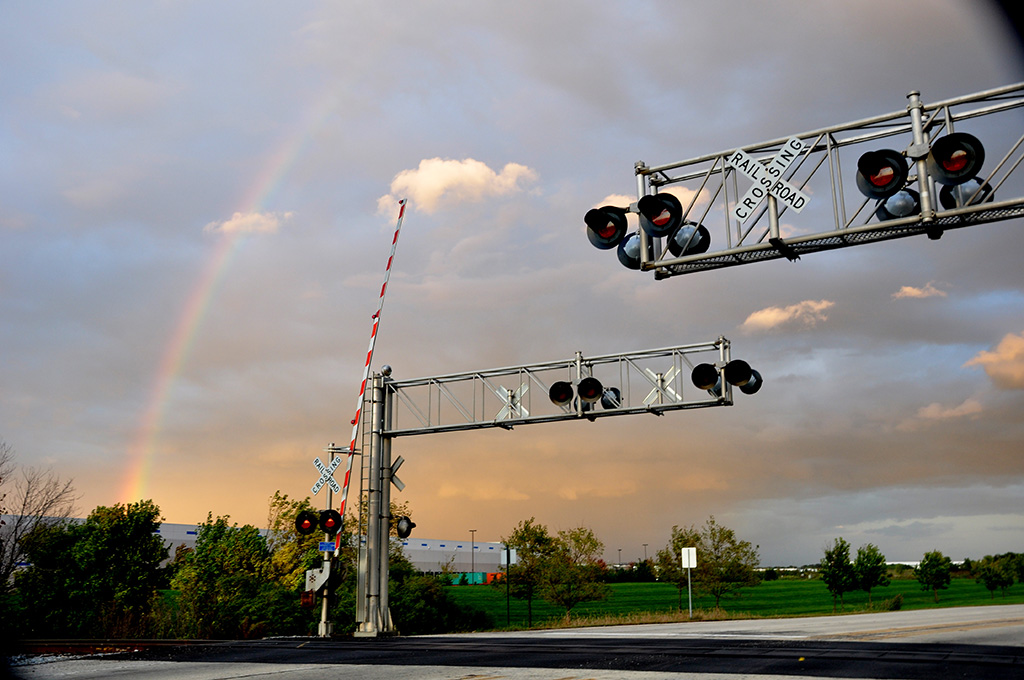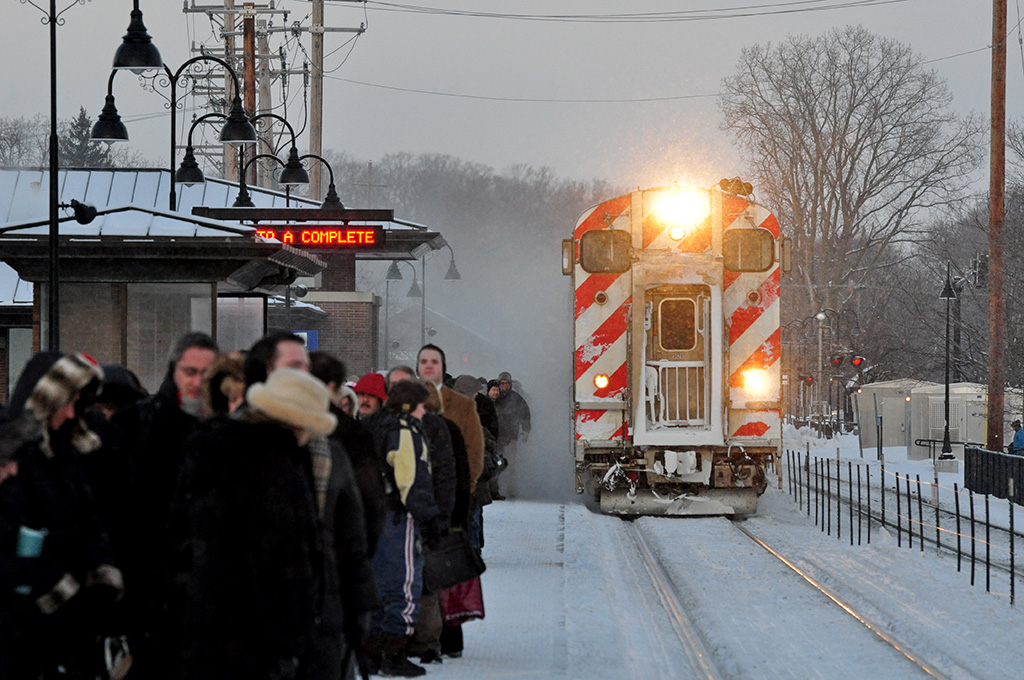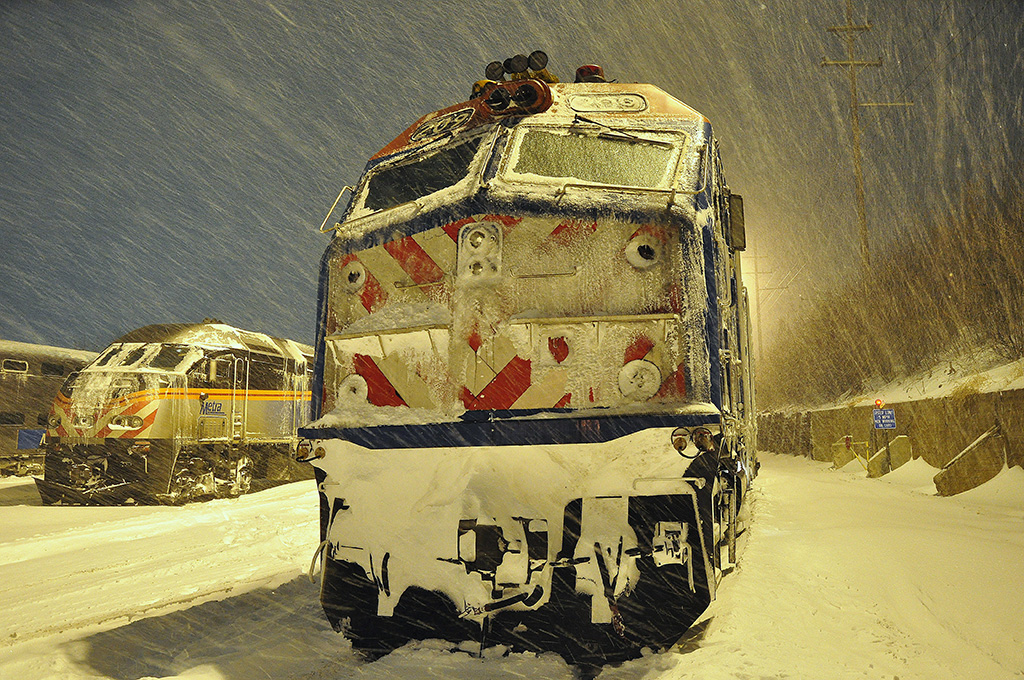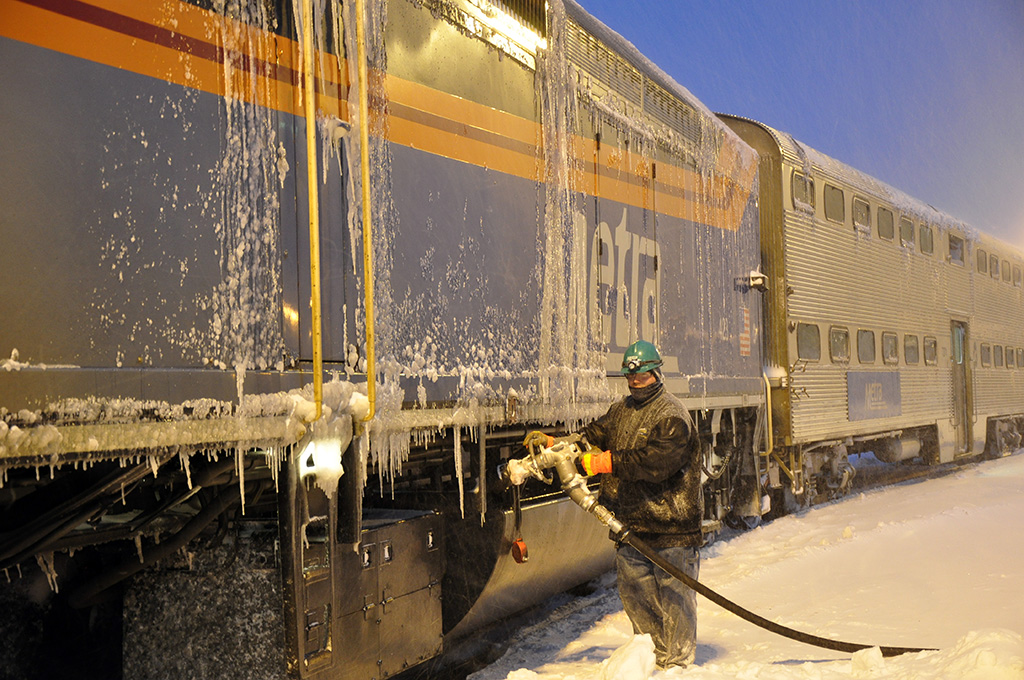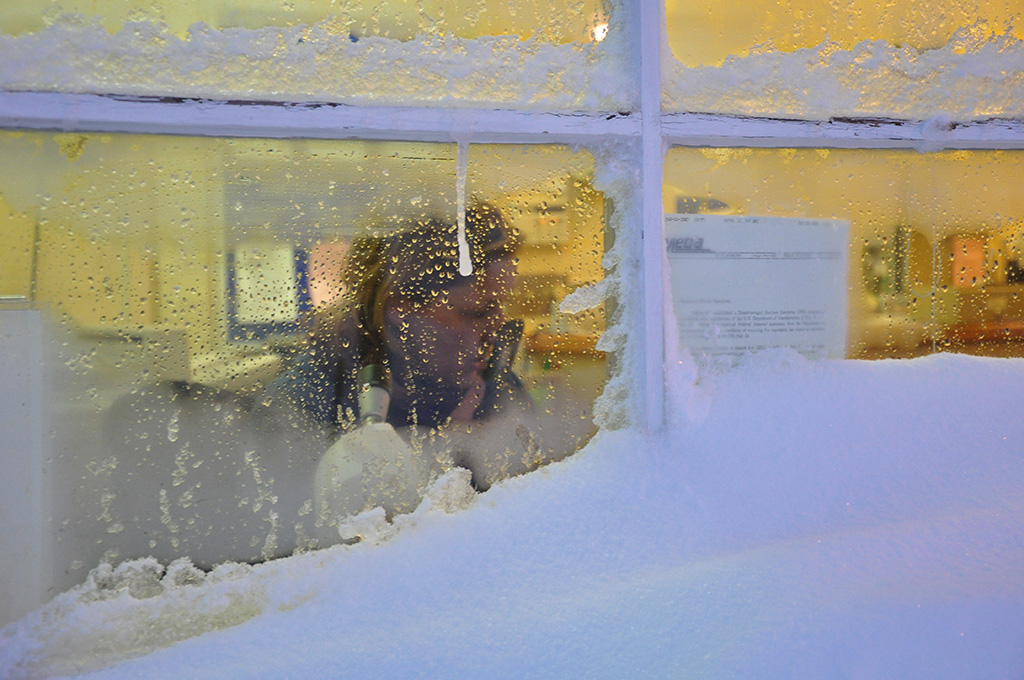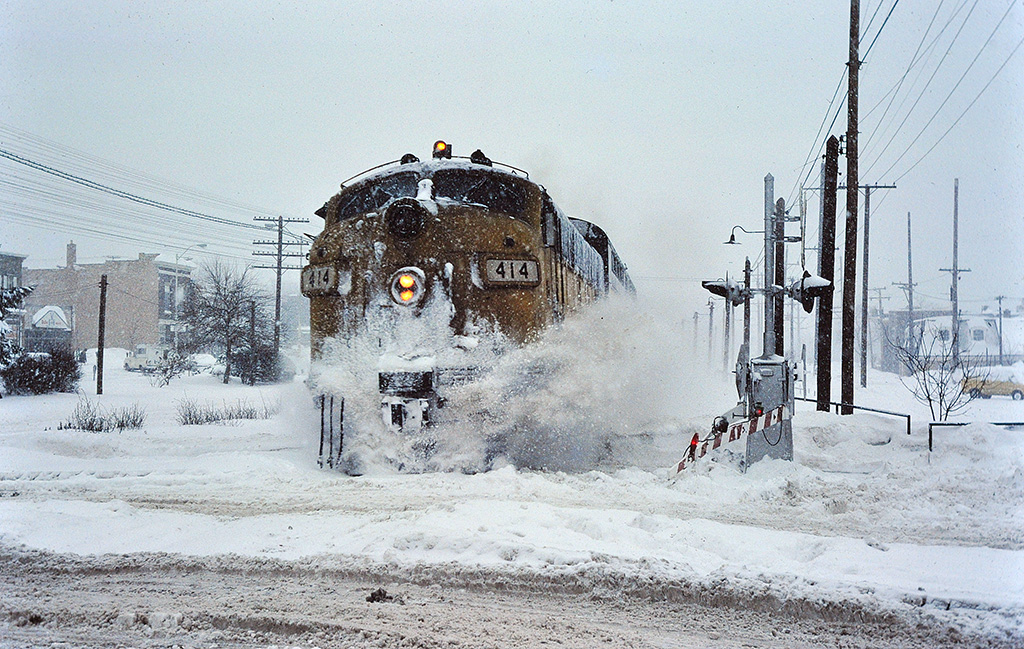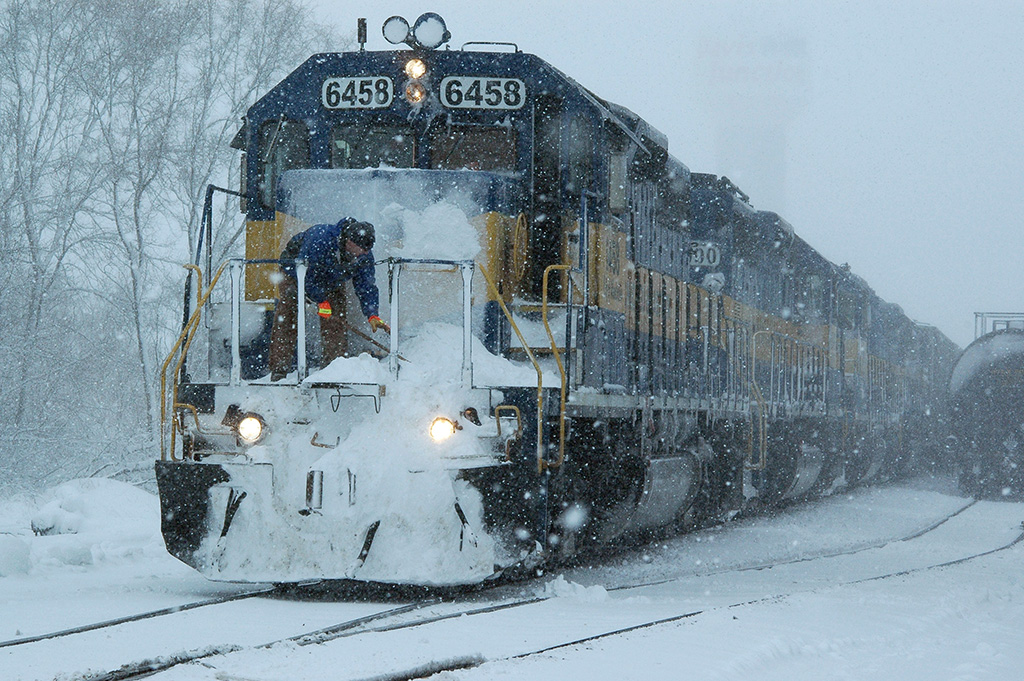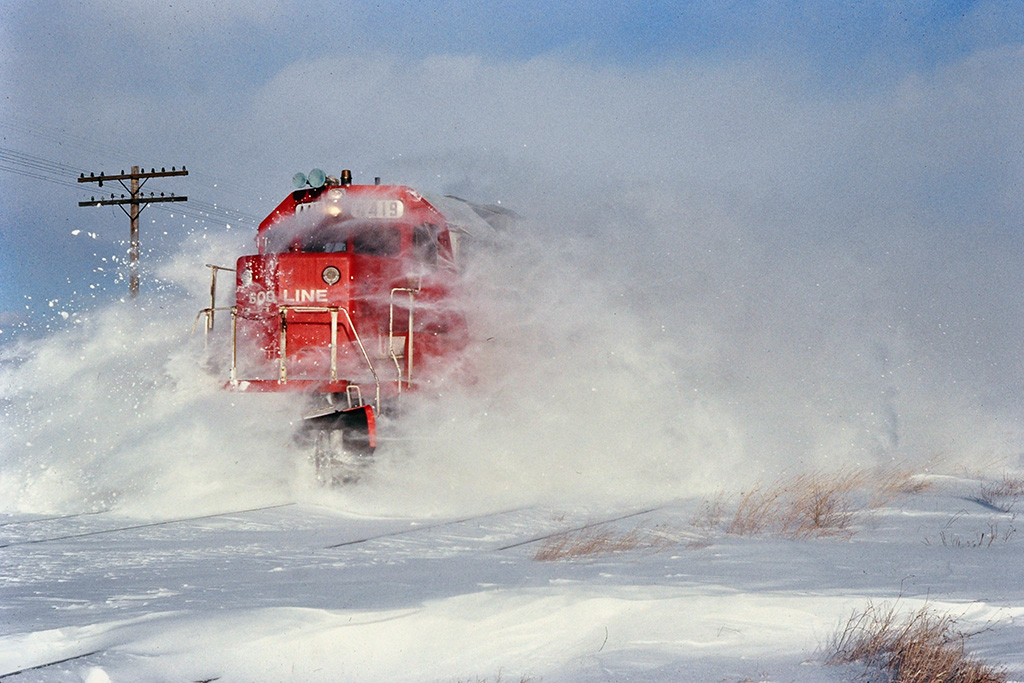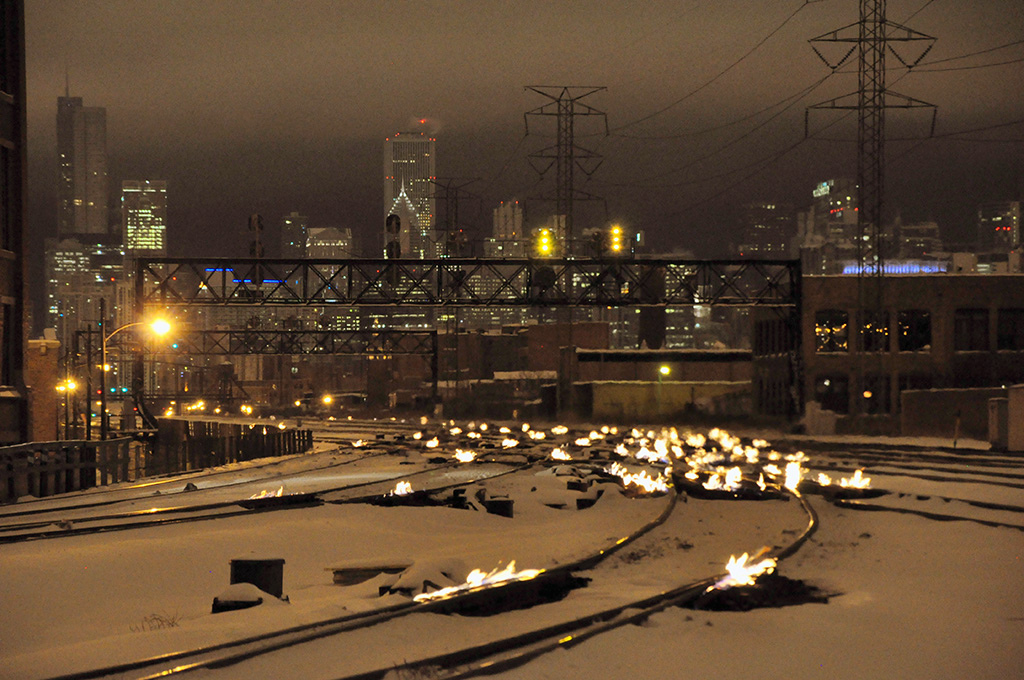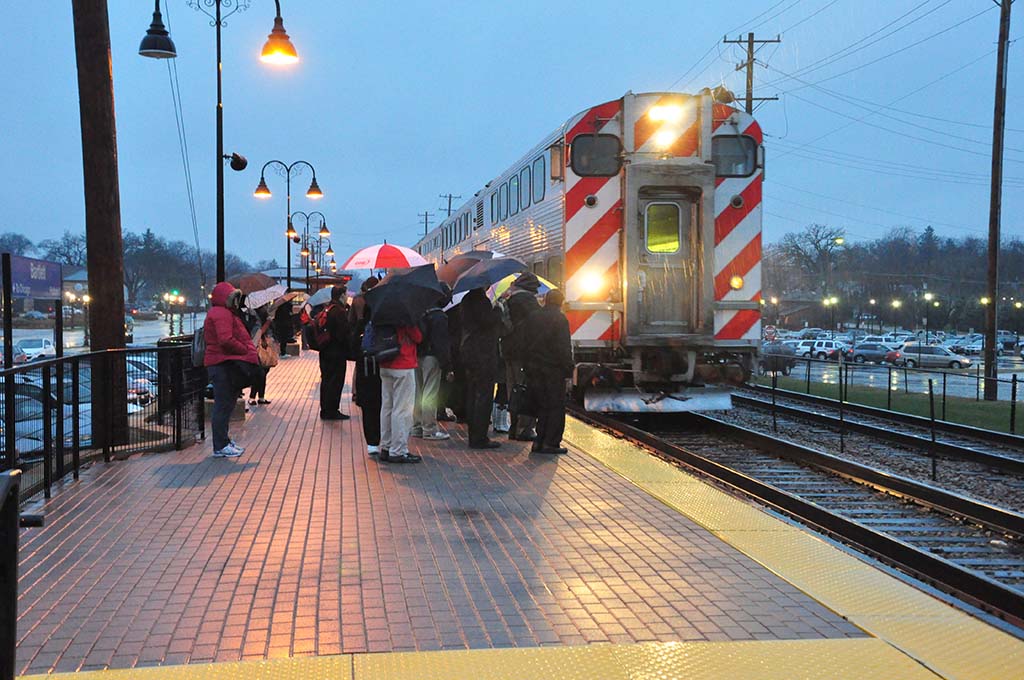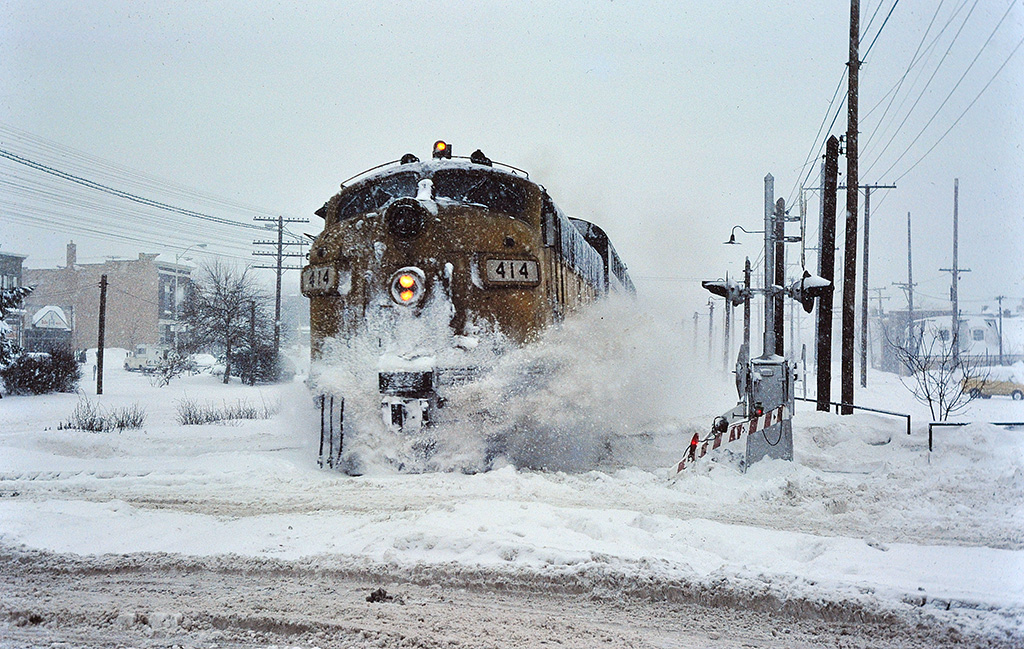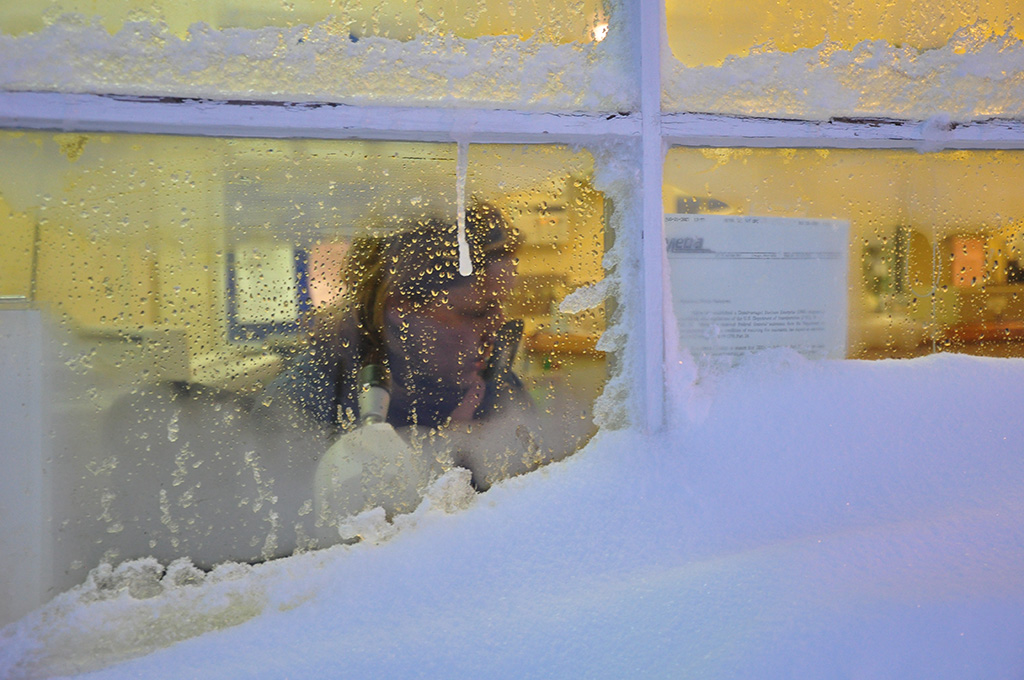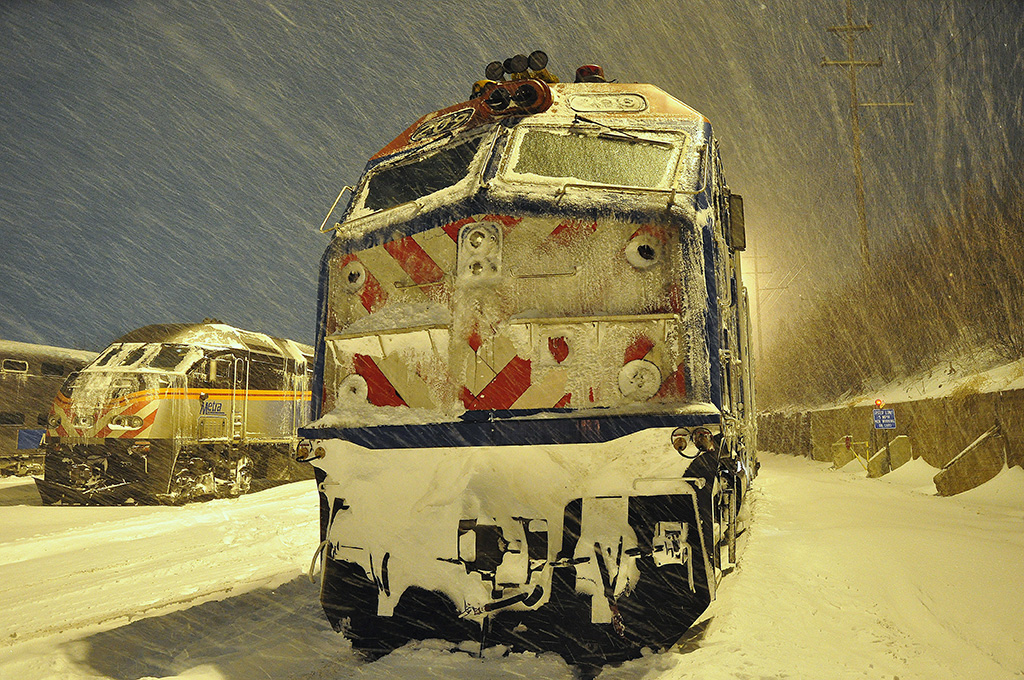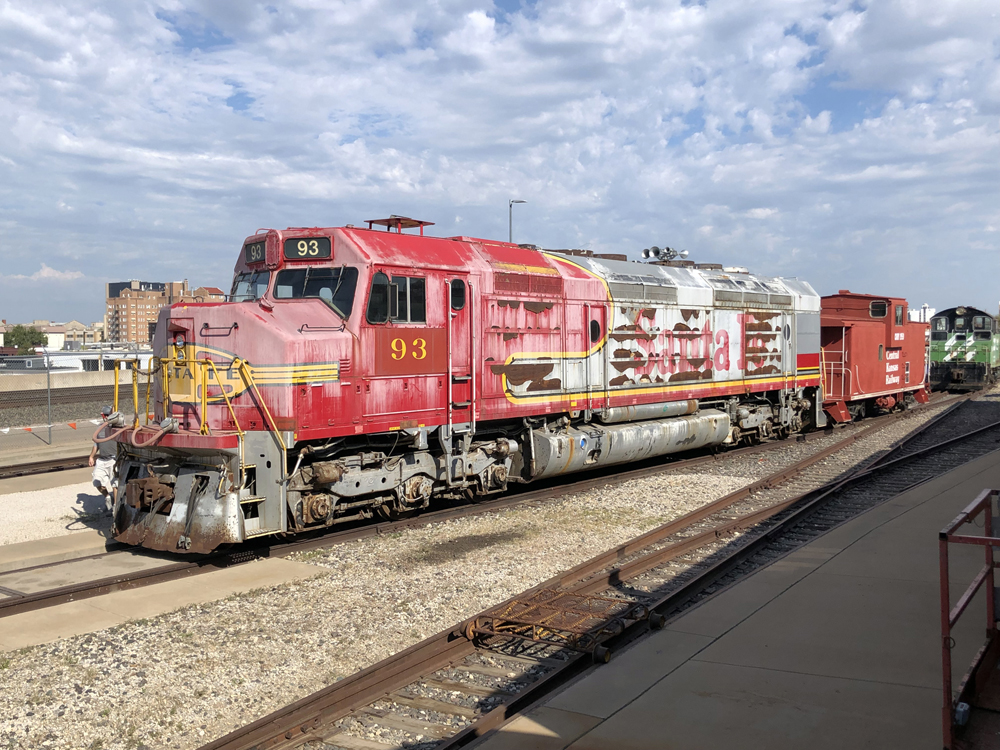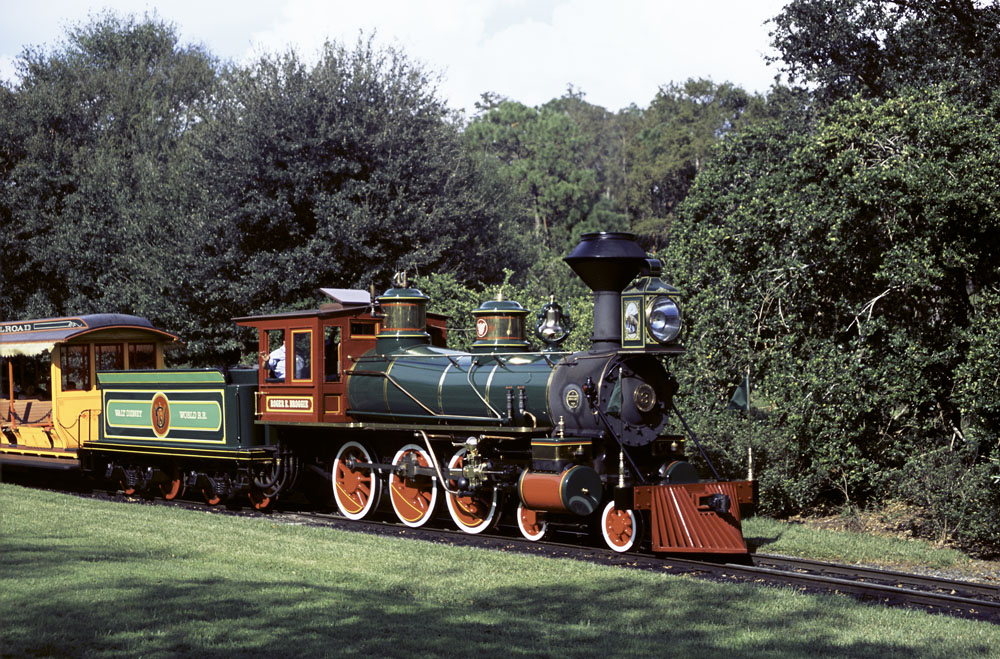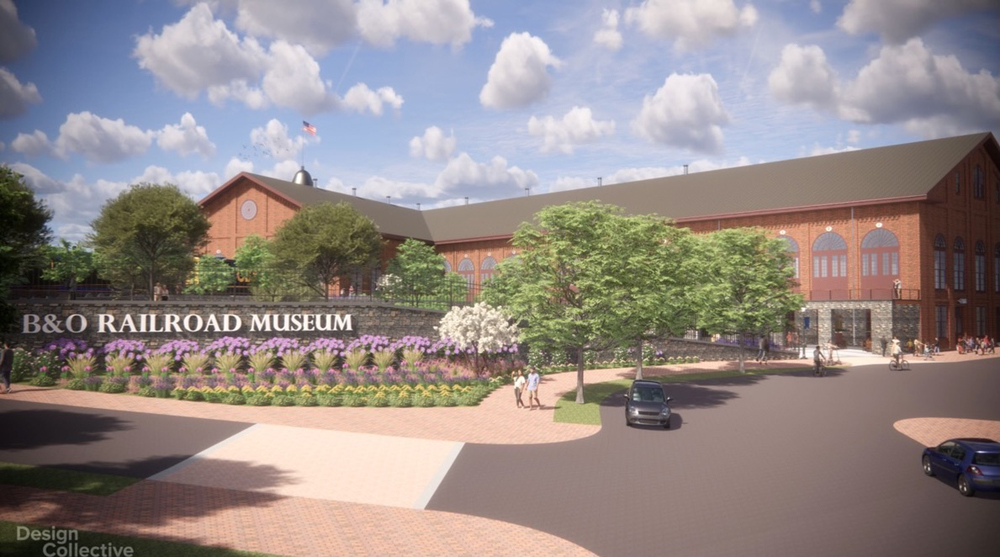ML: I’ve always been interested in taking pictures as a hobby, and I was fascinated by bad weather, especially snow. I started out in photography class in high school, playing around with what you could do with black and white images. Shooting storms made black and white pop. By the time I was sixteen, they allowed us to photograph with color film, which was very expensive. I was the only one to go out and shoot on rainy, snowy, or foggy days.
AG: Are there particular photographers who inspire you?
ML: A friend of mine named Mike Schafer. I met him when I was fourteen or fifteen years old. He is a writer and editor for a railroad magazine and book publisher in Illinois and he gave me a lot of inspiration on shooting pictures. I’ve seen a lot of his stuff on cloudy days, snowy days. You’d see all the little details you could get in a picture in his cloudy day pictures. On a sunny day, the sun’s shadows would block a lot of this. He showed me how to do things correctly when I was still in photography class. He’d say “make sure you get the telephone poles in your pictures, try to get the street sign that says what town you’re in, make sure you show the train station in the background.” I learned a lot from him just by going to slideshows and picking up ideas on how he photographs. He was a guy that was not afraid to photograph in rain or snow, or in bad weather. He took it all in. He had a lot of experience under his belt and I took advantage of what he said.
AG: What interests you about railroads?
ML: Railroading has always been a hobby of mine and working for the railroad makes it even better because you enjoy what you do. I remember liking it back when I was three or four years old. I don’t know exactly what got me hooked, if it was the friendly waves of the crews, or if it was just something like hearing the train going down the tracks. It just fascinated me because the image of every train is different. I remember growing up in Addison, Ill., and there was a branch line going into downtown Addison and back then, they had five-man crews on each train. They would switch cars all up and down this line and I’d ride my bike out and watch them work. They used hand signals because they didn’t have railroad radios yet. It was an interesting thing to see when you’re a young kid. That’s when I really started to get interested. This was something these guys were being paid to do and it looked like fun. Everyone got along really well and they looked like they enjoyed what they were doing. I always hung around the railroad tracks waiting for them to come in. As I got older, I became good friends with these guys and in high school, I started photographing them as they worked. I also started photographing them in bad weather. They never stopped; they worked in all kinds of weather.
AG: What is your favorite part about photographing railroads?
ML: There’s a certain type of locomotive that I love photographing called covered wagons. They’ve been around since the late 1930s. They’ve always been my favorite thing to photograph and I’ve been taking pictures of them since high school. If they’re running on specials, I always make an extra effort to get out and take pictures of them. You have to travel pretty far to get to them.
AG: Does the knowledge from your job give you any special insight into the photographs you plan to take?
ML: Yes, working for the railroad helps out. I see the trains that come in and out of the yard at night. For the past few days, I’ve been seeing trains come in covered in ice and snow. So in the morning, I come back out and photograph those trains. I can also go out the next day and wait for these trains to pass around a curve for a good picture. You do have an advantage, because you know what’s going out and when it’s going. When I get off work in the morning, I already know where I’m going to go.
ML: Taking pictures on a sunny day, or in black and white is cool, but if you can get those pictures in the snow or in the fog, it’s really spooky. It’s a creepy looking picture. On a cloudy day, there aren’t any shadows you have to worry about. Sunny days are pretty too, don’t get me wrong, I do go out and shoot on sunny days, but there are great things you can do with lighting on cloudy days.
AG: What is your favorite weather system to photograph in? Why?
ML: Snow is one of my favorites, and fog. Snow is really neat. You can make a train that’s going twenty miles per hour look like it’s going 60 mph just by photographing it with the snow blowing around the tracks. It gives the picture a lot of powerful impact. Fog is spooky looking and you can do really cool things with the headlights. You might not be able to see the whole train, but just seeing the locomotive with a few cars behind it and the long beam of the headlight makes it really spooky. If you took the same picture on a sunny day with a bright blue sky, it’s just a regular train picture. If you go out on rainy days just before dawn, you get a blue effect on your picture. Everything is shining and glowing and if you slow your camera’s shutter speed down, you can see the mist coming down out of the clouds.
AG: Have you ever been injured or has your equipment ever been damaged from inclement weather?
AL: Oh yes. In 1982, before there were digital cameras, I was waiting outside between Hampshire and Genoa, Ill., to photograph a freight train and the winds were blowing between 50 and 65 mph. The snow was probably 8 to 10 feet high over the tracks. We’d walked a block or two down the main line to photograph the train and we should have held our cameras inside our jackets more because after the train went by, the camera I was using got completely soaked. The other camera was completely frozen shut. The battery was frozen and the oil fibers that make up the screen in the back froze, too. I’ve had rocks and little pebbles fly up and hit the filters on the front of my camera and crack them. Bad weather can definitely do some damage to your equipment.
AG: Is there anything in particular that you feel you capture when you work in bad weather that you can’t get when it’s nice out?
ML: The effect you can get on cloudy or rainy days makes objects in the picture look a little blue and makes the whole thing look a little spooky. You can’t get that when it’s sunny out. There are lots of advantages to going out on a cloudy day but the biggest advantage is that there aren’t any shadows. You can get all the detail you want without having to worry about the position of the sun. Don’t be afraid to take pictures because it’s cloudy.
AG: Do you have any words of advice to others who would like to photograph trains in bad weather?
ML: If you’re going to go out in bad weather, you’re going to go out far. Make sure you have two spare tires and make sure they’re well inflated. A tire repair kit is always helpful. Potholes are the worst things in the winter because often, you don’t see them until after you’ve hit them and blown out a tire. Carry extra batteries, an extra cell phone charger, and water and food. I carry a portable plug in heater in my car that works off the cigarette lighter. These are great to have in your car because if you get stuck, you have to have a way to keep yourself warm while you wait for help. It’s always important to tell people where you’re going. Don’t be selfish and not tell people where you’re going so that you can get your perfect shot. If you happen to get stuck in the snow and no one knows where you’re at, you’re completely lost.
Aviva Gellman is a junior at the University of Minnesota, double majoring in political science and theater. She joined the Center for Railroad Photography & Art as an intern in June 2013.












